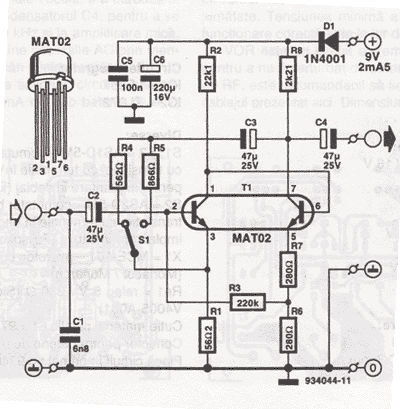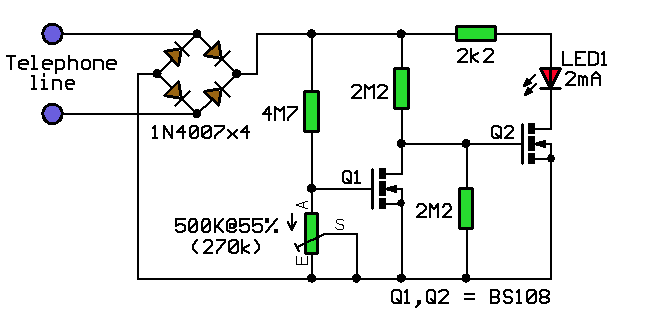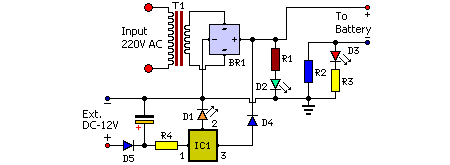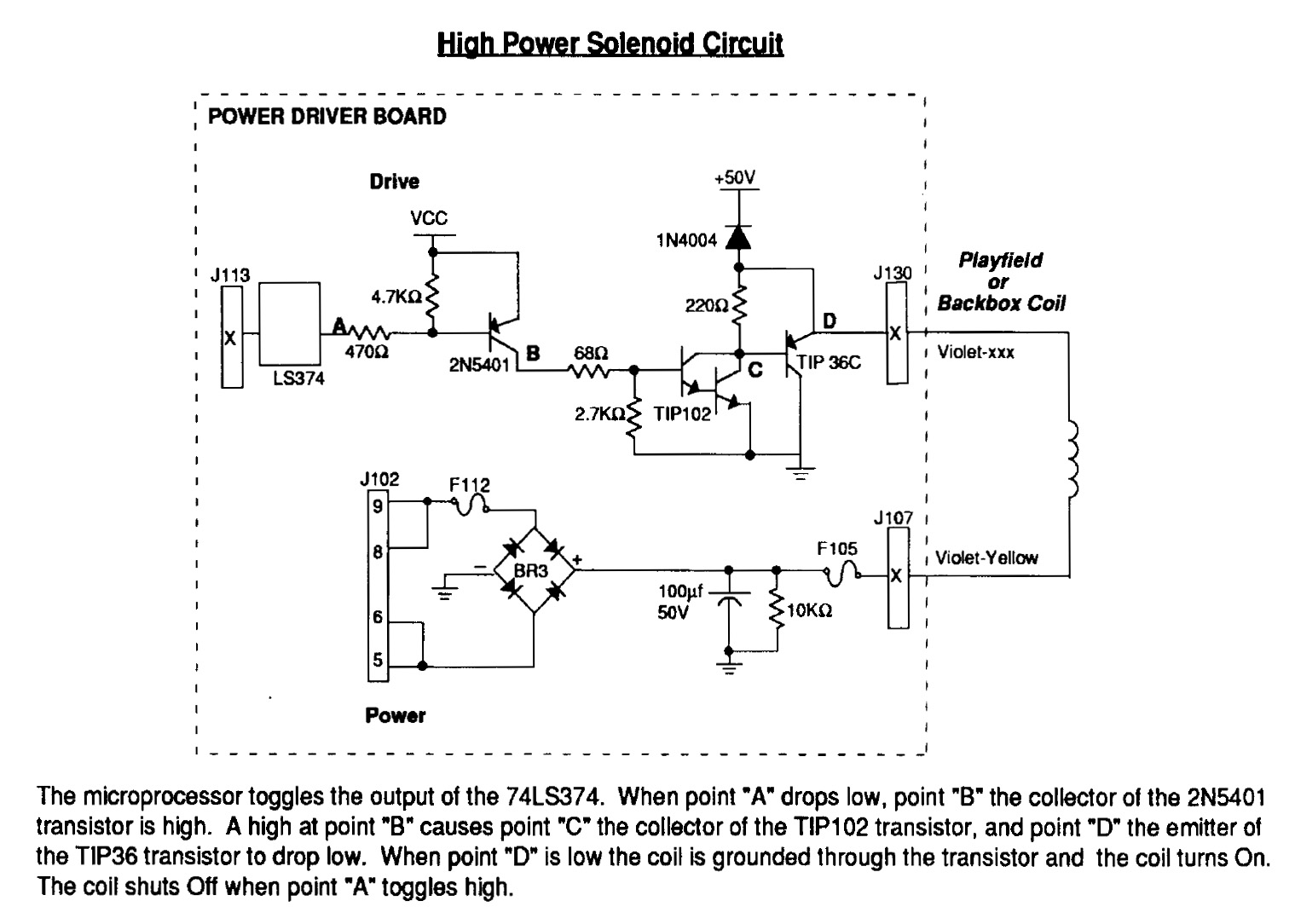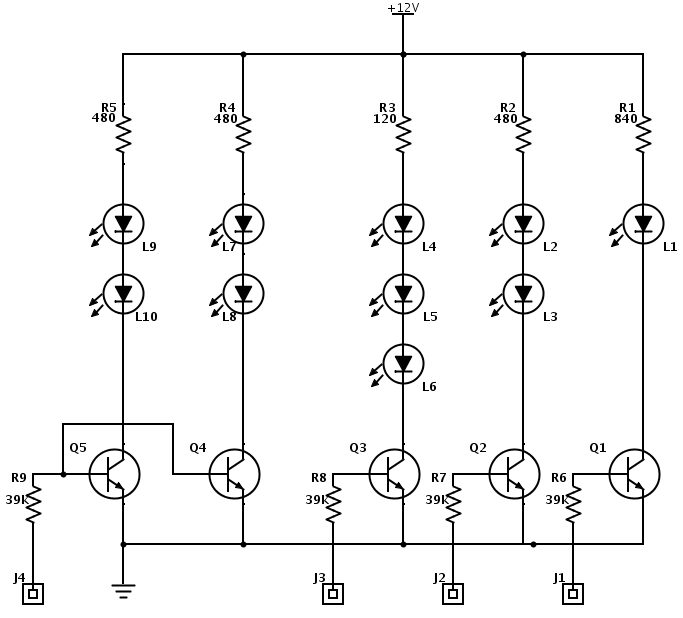
Phone In Use Electronics Project
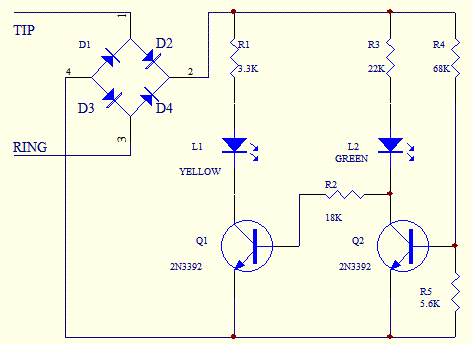
Phone In Use Indicator Electronics Project using 5 resistors, 2 NPN transistors, 4 diodes, and 2 light-emitting diodes.
The Phone In Use Indicator is an electronic project designed to visually indicate when a telephone line is active. This circuit employs a combination of resistors, NPN transistors, diodes, and light-emitting diodes (LEDs) to achieve its functionality.
The circuit typically consists of five resistors, which are used to limit current and set appropriate voltage levels for the components. The two NPN transistors serve as switches that are triggered by the voltage changes on the phone line when the phone is in use. When the phone is picked up, the voltage drop across the line activates the first NPN transistor, which in turn activates the second transistor.
The four diodes are arranged in a configuration that protects the circuit from reverse polarity and ensures that the current flows in the correct direction. This arrangement prevents damage to the transistors and LEDs during operation. The diodes also help in isolating the phone line from the circuit, ensuring that the indicator does not interfere with the telephone's functionality.
The two light-emitting diodes serve as visual indicators. When the phone is in use, the transistors allow current to flow through the LEDs, causing them to light up. This provides a clear visual indication that the phone line is engaged, which can be particularly useful in shared environments or offices where multiple users may be using the same line.
Overall, this Phone In Use Indicator project is a practical application of basic electronic components, illustrating how simple circuitry can be utilized to provide useful functionality in everyday scenarios.Phone In Use Indicator Electronics Project using 5 resistors, 2 NPN transistors, 4 diodes and 2 light emitting diodes 🔗 External reference
The Phone In Use Indicator is an electronic project designed to visually indicate when a telephone line is active. This circuit employs a combination of resistors, NPN transistors, diodes, and light-emitting diodes (LEDs) to achieve its functionality.
The circuit typically consists of five resistors, which are used to limit current and set appropriate voltage levels for the components. The two NPN transistors serve as switches that are triggered by the voltage changes on the phone line when the phone is in use. When the phone is picked up, the voltage drop across the line activates the first NPN transistor, which in turn activates the second transistor.
The four diodes are arranged in a configuration that protects the circuit from reverse polarity and ensures that the current flows in the correct direction. This arrangement prevents damage to the transistors and LEDs during operation. The diodes also help in isolating the phone line from the circuit, ensuring that the indicator does not interfere with the telephone's functionality.
The two light-emitting diodes serve as visual indicators. When the phone is in use, the transistors allow current to flow through the LEDs, causing them to light up. This provides a clear visual indication that the phone line is engaged, which can be particularly useful in shared environments or offices where multiple users may be using the same line.
Overall, this Phone In Use Indicator project is a practical application of basic electronic components, illustrating how simple circuitry can be utilized to provide useful functionality in everyday scenarios.Phone In Use Indicator Electronics Project using 5 resistors, 2 NPN transistors, 4 diodes and 2 light emitting diodes 🔗 External reference
